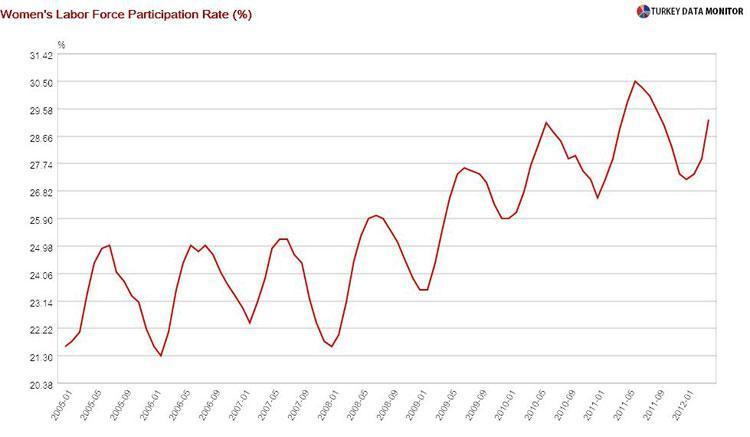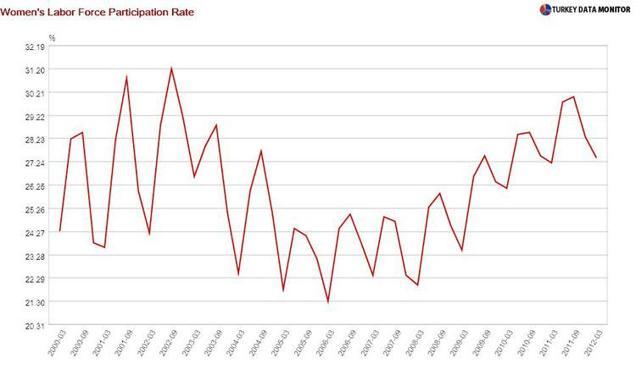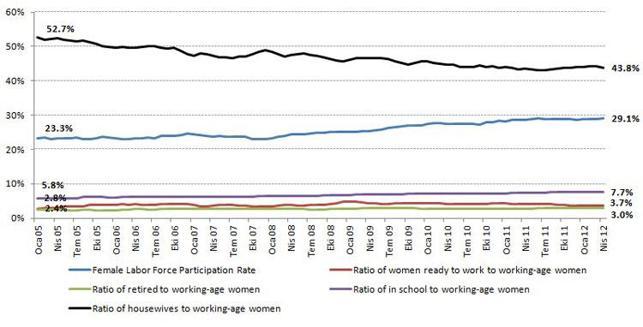Desperate Turkish Housewives?
 A report from Ankara-think tank TEPAV made a big splash a couple of weeks ago.
A report from Ankara-think tank TEPAV made a big splash a couple of weeks ago.Based on the Turkish Statistical Agency’s March employment figures, the TEPAV unemployment bulletin highlighted that the number of housewives had increased by nearly half a million annually. While the population over the age of 15 grew by 1.2 million during this period, the number of people in the labor force increased by only 328,000. The rest, a hefty 868,000, chose not to seek employment. Of those, 496,000 were housewives.
While the bulletin itself did not jump to any conclusions, it did not require a lot of imagination on the part of newspapers to come up with titles paying homage to the popular American chick-show. However, in a short note published yesterday, Gökçe Uysal of Istanbul-think tank BETAM questions whether Turkish women really are desperate housewives.

She first notes that women’s labor force participation has actually been rising since 2008. It is not a big surprise that the increase coincided with the global crisis: If the main breadwinner of a family is unemployed, or likely to be soon, the other members are more likely to join the labor force. This effect, which is particularly strong in countries like Turkey, where many women would otherwise choose to stay at home, was clearly observed during the 2001 crisis, when women’s labor force participation jumped 7 percent in two quarters.

But while this figure subsequently fell in the wake of the 2001 crisis, the same has not happened more recently, despite a recovery. During a phone interview on Friday, Uysal explained this may be due to the increase in women’s education as well as the recent reductions in social security premiums for female workers.
In her note, Uysal also shows that the share of housewives in the working-age female population has actually been dropping since 2005. But she was quick to note that all this should not be taken to mean that Turkish women are not desperate housewives. Women’s labor force participation is currently 29.2 percent, and the army of housewives makes up 43 percent of working-age women. They are just not as desperate as the TEPAV bulletin suggests.

So what should be done? The BETAM report “Increasing the Labor Force Participation of Disadvantaged Groups,” which was released yesterday, offers some concrete policy recommendations. One is childcare availability and support, which would induce women to work. Flexible labor regulations, including temporary employment, on the other hand, would increase the demand for women. Fellow Daily News columnist Güven Sak, who happens to be TEPAV’s Managing Director, made the same argument in his own “desperate housewives” column last week.
Maternity leave is a tricky issue. While better leave terms would make women more likely to seek employment, it would also make firms less likely to hire them. In Sweden, fathers have paternity leave, which cannot be transferred to mothers. You may say I’m a dreamer, but I’m not the only one: this is one of the recommendations of the BETAM report as well.
After all, modern Turkey was quick to grant women voting rights. I don’t see why we cannot be at the forefront of women’s labor regulation. Except that…










